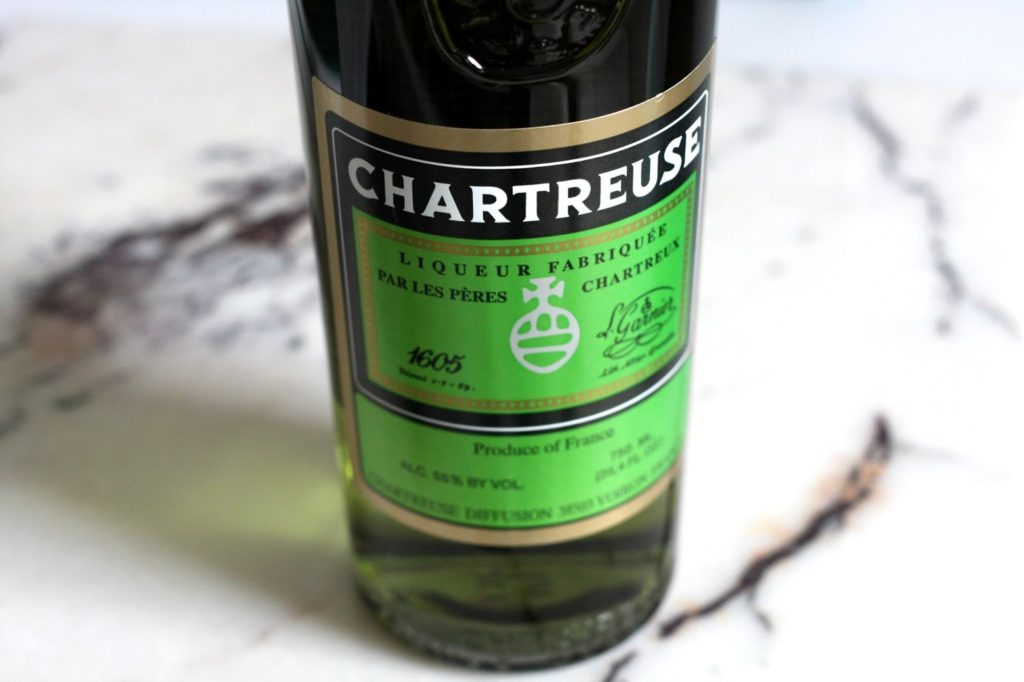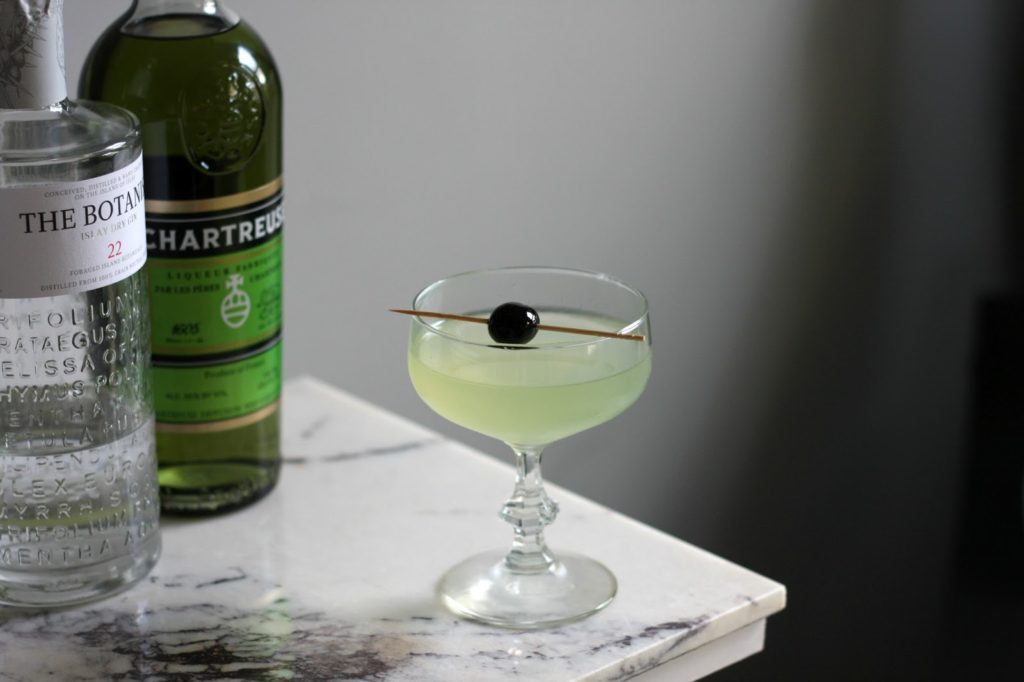I have wanted a bottle of Green Chartreuse for a really, really long time. It basically went on my wish list as soon as I started getting into cocktails. It kept popping up in really good drinks, and soon it was pretty clear that it should be one of my next purchases. Then I saw the price tag. Maybe $60 isn’t a lot for some folks, but it’s pretty hefty for me. I knew it would last a really long time, but there were so many other, cheaper spirits out there that I wanted that I shelved my dreams of Last Words and Chartreuse Swizzles for a later day.
Today!
That’s right, I finally bought a bottle of Green Chartreuse, and I am super excited. I’d been feeling a bit uninspired cocktail-wise, and when I looked at some of the recipes I could make with it, I got enthusiastic again. I can’t wait to share some with you, and I’ll do my best not to put it in everything since I know it’s not something a lot of people have at home.
So what is Chartreuse? It’s a sweet, herbal liqueur. I primarily wanted it for cocktails, but I also love it on its own. It should be served very cold. Sipping it, there’s a really interesting progression of flavors. First you taste the sweetness, then citrus and herbs, and then anise and a vegetable bitterness, with the sweetness lingering after your sip. It’s become a very popular shot with a particular crowd; Details magazine called it “the hipster Jagermeister.” Roosevelt, which I visited when I went to Denver earlier this year, had Chartreuse on tap (a 70/30 mixture of Yellow to Green, if I remember correctly), and said they serve tons of it. It’s particularly popular with service industry folks.
History: Green Chartreuse is made by Catholic Carthusian monks, also known as the Order of St. Bruno or the Chartreuse Order. It was founded in the Chartreuse Mountains of France in 1084. In 1737, the monks began making Green Chartreuse, supposedly based on a recipe for an “Elixer of Long Life” from an ancient manuscript given to the order over 100 years prior by the Marshal of King Henri IV’s artillery (no word on where he got it). They sold it as a health tonic, bringing it down to nearby villages by mule. But it turned out that people enjoyed drinking it just for fun, so the monks reduced its alcohol content to 55% and started selling it as a liqueur. It became popular throughout France. In 1838 they began making Yellow Chartreuse as well, which is less alcoholic and slightly sweeter.
The French government briefly took control of the distillery in the early 20th century, forcing the monks to flee to Spain. But the government-run distillery went bankrupt in less than 30 years, and the monks were able to return.
Chartreuse claims that only two monks know the recipe for Green Chartreuse, which includes 130 different plants and flowers. They crush and mix the botanicals at the monastery and then bring them to the distillery in Voiron, about 15 miles away, where they are macerated in alcohol that is distilled and aged in oak casks. Again, it’s supposedly only these two guys – Dom Benoit and Brother Jean-Jacques – who do it all with the help of a couple of assistants.
Fun fact: the liqueur came before the color. We refer to certain shades of green as “chartreuse” because they are similar to Green Chartreuse in color.
Green Chartreuse
Price: $60
Alcohol Content: 55%
Popular Cocktails: Last Word, Chartreuse Swizzle, Pousse Cafe, Bijou
I think the Last Word is probably the most popular cocktail with Green Chartreuse. Its ingredients might make you a bit leery at first, but the final product is more than pleasantly surprising. Somehow the combination of equal parts gin, Green Chartreuse, maraschino liqueur, and lime juice creates perfect harmony. It’s vaguely reminiscent of an Aviation, but the Chartreuse makes it less tart and much more herbal. It’s an excellent cocktail.
For the gin, The PDT Cocktail Book calls for Tanqueray; I used The Botanist, one of my new favorites.
History: This is a Prohibition-era cocktail was invented at the Detroit Athletic Club in the 1920’s. It was a favorite of Vaudeville comedian Frank Fogarty, and may have been named for him. The recipe was first published in Ted Saucier’s Bottoms Up! in 1951. But then it dropped off the map until, in 2004, Murray Stenson put it on the menu at the Zig Zag Cafe in Seattle. It turned out to be quite a resurrection, with the drink becoming widely popular.
Last Word
3/4 oz. gin
3/4 oz. Green Chartreuse
3/4 oz. maraschino liqueur
3/4 oz. lime juice
Combine all ingredients in a shaker with ice and shake until well chilled. Strain into a cocktail or coupe glass and garnish with a brandied cherry, or leave ungarnished.
Recipe from The PDT Cocktail Book.









